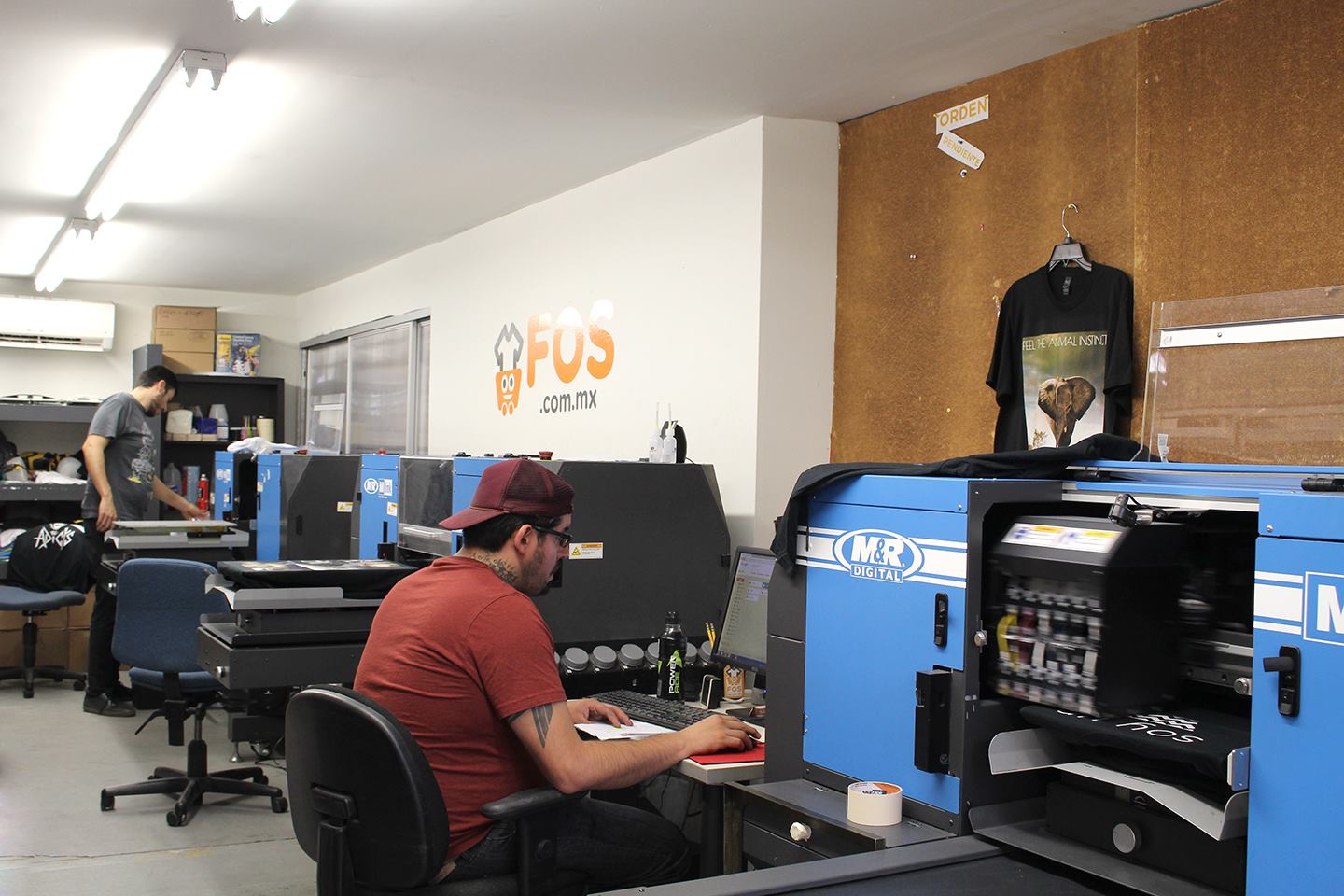With the advent of advanced printing techniques, designers now have the ability to create intricate, vibrant, and unique designs directly on fabric, opening up a world of creative possibilities in the world of fashion.
Digital printing technology allows for highly detailed and multi-colored prints that were previously impossible with traditional screen printing methods. By utilizing specialized printers and software, designers can transfer their designs directly onto the fabric, resulting in a more efficient and cost-effective production process. Digitally Printed T-Shirts not only allows for greater creativity in t-shirt design but also offers increased customization options for both individuals and businesses.

What is Digital Printing?
Have you ever wondered how those unique and eye-catching designs end up on your favorite t-shirts? Well, the answer lies in the incredible technology of digital printing. Unlike traditional methods such as screen printing or heat transfer, digital printing uses computer-controlled printers to apply the design directly onto the fabric. This innovative approach has revolutionized the fashion industry in more ways than one.
Unleashing Creativity and Flexibility
One of the most remarkable aspects of digital printing is its ability to unleash the creative potential of designers. With this technology, there are virtually no limits to the complexity or intricacy of the designs that can be achieved in digitally printed t-shirts. Whether it’s a vibrant and detailed illustration or a photographic image, digital printing can faithfully capture every nuance and reproduce it on digitally printed t-shirts with astonishing clarity.
Quick Turnaround and Low Minimums
Gone are the days when you had to order hundreds of t-shirts just to meet the printing requirements. Digital printing allows for much smaller print runs with low minimum orders, making it ideal for small businesses and individuals looking to create custom, one-of-a-kind garments. Additionally, the process is incredibly fast, allowing for quick turnaround times and reducing the need for excess inventory.
Eco-Friendly and Sustainable
In today’s world, sustainability and environmental consciousness are essential considerations for any industry. Digital printing helps minimize waste and reduces the impact on the environment. Unlike screen printing, which requires separate screens and inks for each color, digital printing uses a single printer and ink set, significantly reducing ink waste and water usage. Additionally, it eliminates the need for harmful chemicals or solvents typically associated with traditional printing methods.

High-Quality Prints with Direct-to-Garment (DTG) Technology
When it comes to achieving high-quality prints on t-shirts, Direct-to-Garment (DTG) technology is a game-changer. This cutting-edge technique involves printing the design directly onto the fabric, resulting in detailed and vibrant prints with a soft feel.
How DTG Printing Works
DTG printing works by spraying tiny droplets of ink onto the fabric, which are then absorbed, resulting in a seamless integration of design and fabric. This method allows for precise control over color and detail, making it perfect for reproducing complex designs. Whether it’s gradients, shading, or intricate patterns, DTG technology can handle it all, delivering a level of precision that was previously unattainable in the world of t-shirt printing.
Endless Possibilities
With DTG printing, the possibilities for t-shirt designs are endless. Whether you’re an artist, graphic designer, or simply someone with a creative vision, this technology empowers you to bring your ideas to life on digitally printed t-shirts. From personalized gifts to branded merchandise, DTG printing enables you to explore infinite design options and create truly unique garments.

From Concepts to Reality: Designing Digitally Printed T-Shirts
The process of creating custom designs for digitally printed t-shirts is a fascinating journey that starts with a concept and ends with a wearable masterpiece. Let’s take a closer look at the step-by-step process:
1. Conceptualization
The first step in designing digitally printed t-shirts is to brainstorm ideas and concepts. This is where creativity takes center stage as you envision the image or design that will be transferred onto the fabric. Think about the message you want to convey, the colors you want to use, and the overall aesthetic you’re aiming for.
2. Digital Design
Once you have a clear concept in mind, it’s time to bring it to life using digital design software. Whether you’re an experienced graphic designer or a novice, there are user-friendly tools available that can help you create stunning designs. From adjusting colors and adding special effects to manipulating images and adding typography, the digital design phase is where your vision starts to take shape.
3. Printing Preparation
After finalizing your design, it’s time to prepare it for printing. This usually involves converting the digital file into a format that is compatible with the printing technology. The file is then processed, ensuring the colors are accurate and the design is optimized for the chosen printing method.
At this stage, it’s important to choose the right fabric for your digitally printed t-shirts. The material should be suitable for digital printing, ensuring the design looks vibrant and durable on the final product.
Making It Easy with Factory1
With Factory1, you don’t have to worry about all these technical details. Our user-friendly online t-shirt designer simplifies the entire process. You can easily create your design, see a preview, and we’ll take care of the rest, from conceptualization to the final printed masterpiece. Say goodbye to the complexities, and hello to hassle-free, digitally printed t-shirts!

Empowering Small Businesses and Independent Artists
In the past, breaking into the fashion industry as a small business or independent artist was a daunting task. The high costs associated with traditional printing methods made it difficult to produce small quantities or experiment with new designs. However, digital printing has changed the game and has become a game-changer for entrepreneurs and artists looking to make their mark in the fashion industry.
Lowered Cost and Minimums
One of the biggest advantages digital printing offers to small businesses and independent artists is the significantly reduced cost. With traditional methods, there were high setup fees, screen charges, and minimum orders required to make the process economical. Digital printing eliminates these barriers by allowing for low minimums and affordable pricing. This means that artists can start small and grow their business at their own pace, without the need for a large upfront investment.
Faster Turnaround Time and More Creative Freedom
Another benefit for small businesses and independent artists is the faster turnaround time offered by digital printing. Traditional methods involved lengthy setup processes and production timelines, but digital printing allows for quick and efficient production. This means that artists can bring their designs to market faster and respond to customer demands more promptly.
Furthermore, digital printing provides artists with more creative freedom. With the ability to print intricate designs and small quantities, artists can experiment and test new ideas without the fear of wasted inventory. This flexibility allows for innovation and encourages artists to push the boundaries of design, leading to fresh and unique products that captivate consumers.

The Future of Digital Printing Technology
As technology continues to advance at a rapid pace, it’s exciting to think about what the future holds for digitally printed t-shirts. With each passing year, new innovations are emerging that are reshaping the world of fashion. Let’s take a closer look at some of the emerging technologies that may shape the future of digitally printed t-shirts.
1. High-Resolution 3D Printing
One technology that shows great promise for the future of digitally printed t-shirts is high-resolution 3D printing. Currently, most digitally printed t-shirts utilize a 2D printing method, but as 3D printing technology becomes more accessible and affordable, we can expect to see a rise in the production of three-dimensional, textured designs. Imagine wearing a t-shirt with a raised, tactile pattern created through 3D printing – it would truly add a new dimension to fashion!
2. Interactive Digital Printing
Another exciting development in the world of digitally printed t-shirts is interactive digital printing. This technology allows the wearer to interact with the design on their t-shirt using touch or motion sensors. Imagine a t-shirt that changes colors or patterns based on your movements or reacts to your touch. With interactive digital printing, fashion becomes an engaging and dynamic experience that goes beyond just wearing a static design.
The possibilities for the future of digitally printed t-shirts are endless. From integrating wearable technology into the fabric of the shirt itself to incorporating environmentally friendly materials, the fashion industry is constantly pushing boundaries and exploring new frontiers.



Leave a comment
This site is protected by hCaptcha and the hCaptcha Privacy Policy and Terms of Service apply.